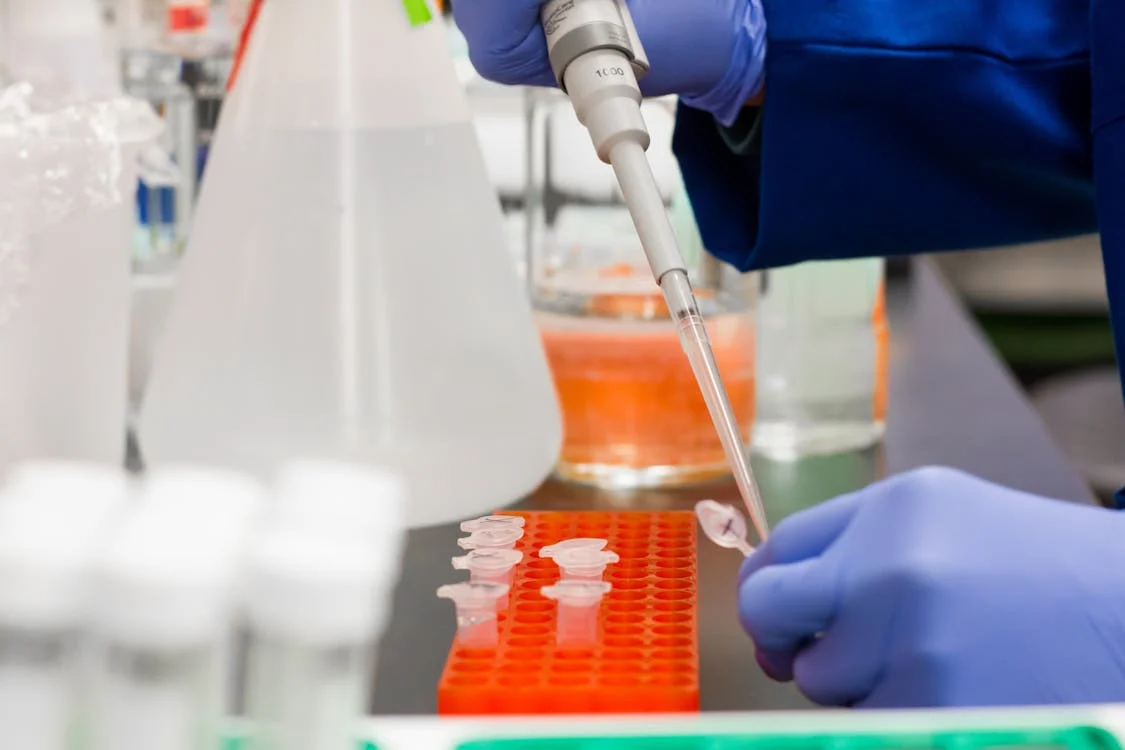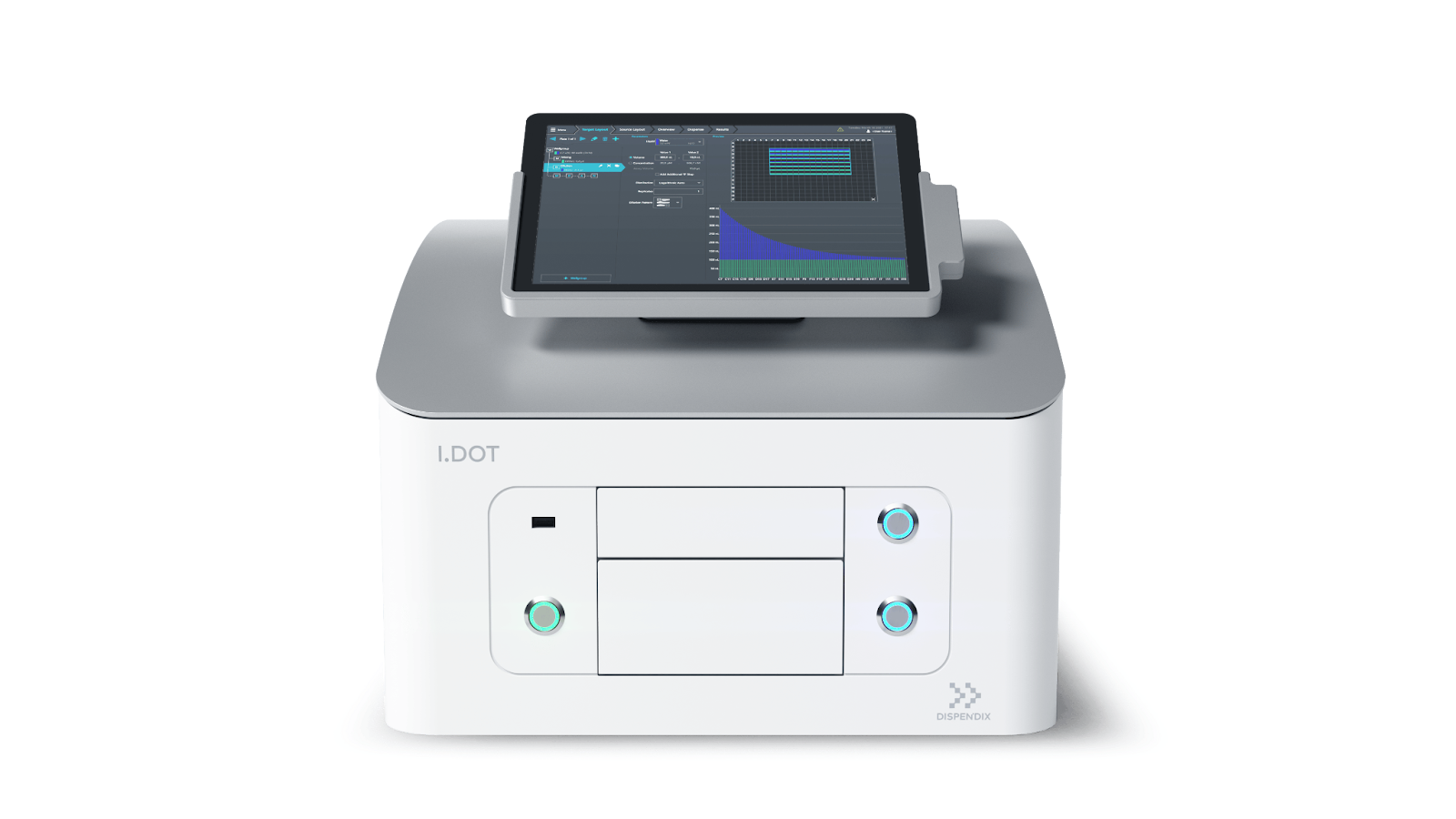Automation is becoming essential for biotech companies looking to keep pace with industry standards. Automated liquid handling achieves faster and more accurate workflows than manual methods. It enables the precise repetition of complex protocols and virtually eliminates sources of human error that can compromise experiments. The Tecan automated liquid pipette is widely used and trusted for diverse applications. However, there are many high-quality competitors in this growing industry.
This article will focus on how automated liquid handling transforms workflows across different applications in the biotech and biomedical industries.
The Impact of Automated Pipetting on Lab Efficiency
Automation means advanced instrumentation handles tedious and repetitive pipetting tasks, improving reproducibility and efficiency1. Manual pipetting is error-prone, leading to experimental failure, lost time, and waste of expensive reagents (Fig. 1)2,3. Pipetting tasks can take up much of the researcher’s time and lead to repetitive strain injuries4. Pipetting tasks become more challenging the longer they are, putting pressure on operator concentration and risking workflow success. Furthermore, tedious pipetting tasks mean researchers cannot focus on experimental design and interpreting results. By freeing this time, automated liquid handling enhances reproducibility and contributes to project efficiency.

Figure 1. Manual pipetting is an essential tool for laboratory workflows but is relatively slow and error-prone compared to automated and semi-automated liquid handling alternatives.
High-throughput screening experiments require accurate pipetting of small amounts of costly reagents into numerous multiwell test plates. The reliability of results depends on consistent dispensing into each well and efficiency for time-sensitive experimental setups. Automated liquid handlers enable accurate pipetting into 96-, 384- and 1,536-well formats in a fraction of the time of manual pipetting. This helps minimize data variability, improve experimental reproducibility, and ensure resources are used more efficiently.
Systems like the Tecan automated liquid pipette and the I.DOT Liquid Handler from DISPENDIX improve workflow efficiency by enabling fast and reproducible liquid dispensing and preventing the need for repeat experiments. The Tecan automated liquid pipette enables pipetting into 1,536-well plates, achieving higher throughput and helping with assay minimization goals. The I.DOT Liquid Handler achieves 0.1 nL resolution and 1 μL dead volume, meaning researchers can perform precise low-volume dispensing, reduce reagent waste, and improve experimental accuracy.
Key Features of Automated Liquid Handlers
Superior Precision
Manual pipetting requires direct input from human operators, which creates a significant risk of error. In addition to the variation of a single operator, there are often substantial variabilities between operators2,3. Automated liquid handling solutions remove much of this risk by ensuring that pipetting is precise, consistent, and reproducible across experiments1.
Seamless Integration
Automated liquid handlers, like the Tecan automated liquid pipette, can be seamlessly integrated into other automated laboratory processes, enabling researchers to achieve consistency and accuracy across entire workflows. This can include molecular applications such as next-generation sequencing (NGS) and cellular applications like high-throughput screening.
Scalability
Automated liquid handling allows for scalable solutions for different laboratory applications. These instruments can reliably dispense into large well-plate formats, enabling researchers to handle extensive workflows that would be impractical with manual pipetting while still maintaining accuracy in smaller-scale applications.
Workflow Optimization
In genomics, systems like the Tecan automated liquid pipette and the I.DOT Liquid Handler streamline NGS library preparation by ensuring precise reagent dispensing, reducing variability, and conserving costly reagents5. In drug discovery, high-throughput screening relies on automated liquid handlers to accurately dispense compounds into multiwell plates, enabling efficient testing of thousands of samples while maintaining consistency across experiments6.
Applications of Automated Liquid Handling
Automated liquid handling helps researchers achieve success across core applications in biotech and biomedical workflows.
NGS Library Preparation
NGS library prep workflows are notoriously tedious and come with a high cost for errors. Accurate library prep is essential for obtaining reliable and reproducible results7. Automated liquid handling relieves researchers of the burden of performing these tasks while achieving greater accuracy.
Drug Discovery
High-throughput screening is an essential component of drug discovery projects. Automated liquid handling allows researchers to screen thousands of compounds efficiently and with high accuracy6. This means promising candidates can be identified quickly and at scale, helping researchers progress faster toward drug discovery goals.
Clinical Diagnostics: High-throughput PCR and ELISA Preparation
Automated liquid handling processes enhance the efficiency and accuracy of high-throughput PCR and ELISA workflows, essential for clinical diagnostics8,9. By standardizing liquid handling, these systems minimize variability in sample and reagent dispensing, ensuring consistent and reproducible results. These capabilities are crucial in workflows that impact patient outcomes.
The I.DOT’s Speed
The I.DOT can fill every well of a 96-well plate with 100 nL in just 7 seconds, offering incredible dispensing speed to match the requirements of the most ambitious projects (Fig. 2).

Figure 2. The I.DOT non-contact liquid dispenser from DISPENDIX achieves incredible speed and accuracy, making it an ideal tool for molecular and cell-based workflows.
Conclusion
Automated liquid handling using tools like the Tecan automated liquid pipette is increasingly vital for lab workflows and enhances precision, efficiency, and scalability across biotech and biomedical applications. Automated liquid handling tools optimize processes like NGS library preparation, drug discovery, and clinical diagnostics by reducing human error and increasing throughput. Factors such as accuracy, integration, and workflow adaptability are key when choosing an automated liquid handling system. Investing in the right solution boosts lab productivity and ensures reliable results.
Begin your automation journey today by talking to an expert at DISPENDIX, home of the I.DOT Liquid Handler.
References
- Holland I, Davies JA. Automation in the Life Science Research Laboratory. Front Bioeng Biotechnol. 2020;8(571777). doi:10.3389/fbioe.2020.571777
- Guan XL, Chang DPS, Mok ZX, Lee B. Assessing variations in manual pipetting: An under-investigated requirement of good laboratory practice. J Mass Spectrom Adv Clin Lab. 2023;30:25-29. doi:10.1016/j.jmsacl.2023.09.001
- Lippi G, Lima-Oliveira G, Brocco G, Bassi A, Salvagno GL. Estimating the intra- and inter-individual imprecision of manual pipetting. Clinical Chemistry and Laboratory Medicine (CCLM). 2017;55(7). doi:10.1515/cclm-2016-0810
- Wu JZ, Sinsel EW, Shroyer JF, et al. The musculoskeletal loading profile of the thumb during pipetting based on tendon displacement. Medical Engineering & Physics. 2013;35(12):1801-1810. doi:10.1016/j.medengphy.2013.08.004
- Hess JF, Kohl TA, Kotrová M. Library preparation for next generation sequencing: A review of automation strategies. Biotechnol Adv. 2020;41(107537). doi:10.1016/j.biotechadv.2020.107537
- Hansel CS, Plant DL, Holdgate GA, Collier MJ, Plant H. Advancing automation in high-throughput screening: Modular unguarded systems enable adaptable drug discovery. Drug Discov Today. 2022;27(8):2051-2056. doi:10.1016/j.drudis.2022.03.010
- Socea JN, Stone VN, Qian X, Gibbs PL, Levinson KJ. Implementing laboratory automation for next-generation sequencing: benefits and challenges for library preparation. Front Public Health. 2023;11(1195581). doi:10.3389/fpubh.2023.1195581
- Torres-Acosta MA, Lye GJ, Dikicioglu D. Automated liquid-handling operations for robust, resilient, and efficient bio-based laboratory practices. Biochem Eng J. 2022;188(108713). doi:10.1016/j.bej.2022.108713
- González-González E, Garcia-Ramirez R, Díaz-Armas GG, et al. Automated ELISA On-Chip for the Detection of Anti-SARS-CoV-2 Antibodies. Sensors. 2021;21(20):6785. doi:10.3390/s21206785